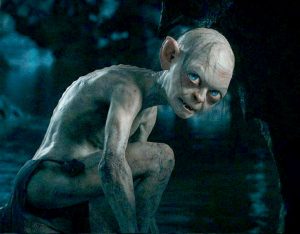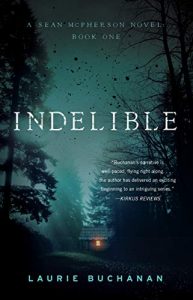THE IMPORTANCE OF CHARACTER DEVELOPMENT
Most fiction readers fall in love with a book because of the characters. I’m no exception. As a person who reads an average of seventy-five books per year, it’s my experience that characters are the most important element in a story. Without believable characters, nothing else holds together.
Think of Gollum, for instance. There aren’t many of us who don’t immediately picture a wizened old man with a few wispy strands of hair on his head, wearing a loincloth, rubbing his hands together, and whispering, “My Precious.” When it comes to character development, JRR Tolkien had the Midas touch.
 There are primary characters (main characters), secondary characters (characters who get a decent amount of page time but aren’t the main characters), and peripheral characters (mail carrier, doctor, neighbor). All three types of characters are vital because it lends diversity and contrast to the storyline. And with that, we get non-plot-specific conflict.
There are primary characters (main characters), secondary characters (characters who get a decent amount of page time but aren’t the main characters), and peripheral characters (mail carrier, doctor, neighbor). All three types of characters are vital because it lends diversity and contrast to the storyline. And with that, we get non-plot-specific conflict.
Regarding diversity, the Sean McPherson novels take place at a fictional writing retreat in the Pacific Northwest called Pines & Quill. One of the four writer-in-residence cottages is wheelchair-friendly. One way I take care not to offend a sometimes stereotyped demographic—differently abled people—is to use a sensitivity reader to ensure that I write accurately on behalf of those characters.
Writers, myself included, jump through many hoops when creating well-rounded, believable characters. For instance, nailing a character’s appearance is vital. Once I establish what they look like in my mind’s eye, I transfer that idea to a “character template” that I developed. I use that tool to play God and fully flesh them out as human beings—people readers relate with and want to learn more about.
I note physical characteristics such as height, weight, hair color, and eye color in my character template. Then comes their nationality. For example, in the Sean McPherson novels, the protagonist is Irish.
The character template is where I also note details about their childhood (good or bad), their parents (or whoever raised them), their siblings, and their childhood friends. I also note if they have any allergies. Why? As a suspense/thriller writer, I might be able to use this to their disadvantage.
As an author creates characters, it’s essential to ask if they’ve survived trauma, either physical or emotional. For example, are they a survivor of cancer, rape, domestic violence? Do they have PTSD—Post Traumatic Stress Disorder? Do they suffer from depression, an eating disorder, or anxiety? If yes, how does their experience factor into their current life? Realism adds to the storyline making it much more convincing because readers can relate.
Is the character left or right-handed? Do they smoke? Do they drink? Do they have any addictions? What’s their personality type—introvert, extrovert, or ambivert? Are they opinionated? What’s their political affiliation?
In the author’s God-like role, it’s vital to bestow both strengths and weaknesses when birthing characters. Protagonists and antagonists alike have these characteristics. It’s part of what makes them relatable, lovable, and if it’s a bad guy—or gal, as the case may be—someone we love to hate.
I also determine and note what the characters do for a living—where they work, their role, and how much money they earn. This, followed by their spiritual tradition, if any. I ask myself if they’re devout or casual in their beliefs. Are they superstitious?
I have a section in my character template that captures information about where they live. Is there a local Indie bookstore? What’s the best coffee shop? As an author of suspense/thriller books, I do research to find out if the story location has a coroner or a medical examiner. There’s a big difference, an important one. Savvy readers know if authors have done their homework—or not.
Do the character rent or own? What type of vehicle do they drive? Where were they born? What’s their academic track record? What’s their gender identification? What’s their relationship history—does it include same-sex love? Have they been, or are they in an interracial relationship? What’s their current relationship status—partnership, single, married, divorced, other? Do they have children? Who important in their life has died, and how has that loss affected them?
Following that, I have a series of interview questions that I answer for each character. I want to know what motivates them. Every one of us wants something. Is the character willing to manipulate, steal, or kill for it?
What frightens them? What’s their biggest fear? What makes them laugh out loud, what type of music they listen to, what’s their favorite color, their favorite food, their favorite book?
What’s their goal—what are they trying to achieve by the end of the story? And equally important, what’s their secret—the thing they don’t want anyone to find out. Ever.
Perfect characters are bland. Nobody wants to read about people who sail through life with doors magically opening for them. We want to see the characters work hard for what they want. What we really want is to see them struggle. What hurdles do the characters have to clear? Do they learn and grow from the experience? Can we relate to them?
How do your characters speak? Their birthplace may result in an accent. Are they chatty, or are they on the quiet side? Are they sarcastic or respectful? Do they interrupt when others are speaking? Dialogue is a color on the author’s palette that helps us paint the characters to life.
Does the character have any nervous ticks? Perhaps a “tell” (a giveaway) that lets others know they’re stressed. Do they have a physical challenge? For example, Sean McPherson, the protagonist in the Sean McPherson novels, has a limp from an accident in the police force. Does the character have an emotional challenge? Sean McPherson’s partner and best friend died in that accident. As a result, Sean suffers from survivor’s guilt.
Is the character shallow, or do they have depth? What is the character good at? And while that’s important, it’s not as important as what they’re not good at. Why? I’m glad you asked.
Let’s say that a character is uncomfortable speaking with others. On the occasions when they have to, are they friendly or defensive? Their form of interaction may cause conflict, and that’s what a good story thrives on. That’s what pulls the reader in and keeps them in.
Characters, at least the main ones, must undergo a character arc. They must evolve (sometimes at a physical, mental, or emotional cost) between the book’s first and last pages. And if it’s a series, this remains true for each book in the series.
 Finally, I get a photo of a person (typically a celebrity I cut from a magazine) that most closely resembles the character. I attach it to an index card, along with a short bio, and post it on something akin to a crime board. This at-a-glance board gives me a visual leg-up when I write. As an example, the celebrity doppelgänger for Sean McPherson is Henry Cavill.
Finally, I get a photo of a person (typically a celebrity I cut from a magazine) that most closely resembles the character. I attach it to an index card, along with a short bio, and post it on something akin to a crime board. This at-a-glance board gives me a visual leg-up when I write. As an example, the celebrity doppelgänger for Sean McPherson is Henry Cavill.
Well-rounded characters with depth and complexity add a relatable dimension to the storyline. A contrast between the ensemble of characters is key to the reader’s experience. We all want characters that we love to love. Equally important, we want characters that we love to hate.
—
BIO
 Laurie Buchanan is a former holistic health practitioner and transformational life coach. She holds a doctorate in holistic health with an emphasis in energy medicine. Her first two award-winning books—Note to Self: A Seven-Step Path to Gratitude and Growth, and The Business of Being: Soul Purpose In and Out of the Workplace, are nonfiction titles designed to motivate, inspire, and transform. Indelible: A Sean McPherson Novel, Book One, launches a suspense/thriller series that takes place at a writing retreat in the Pacific Northwest.
Laurie Buchanan is a former holistic health practitioner and transformational life coach. She holds a doctorate in holistic health with an emphasis in energy medicine. Her first two award-winning books—Note to Self: A Seven-Step Path to Gratitude and Growth, and The Business of Being: Soul Purpose In and Out of the Workplace, are nonfiction titles designed to motivate, inspire, and transform. Indelible: A Sean McPherson Novel, Book One, launches a suspense/thriller series that takes place at a writing retreat in the Pacific Northwest.
Indelible: A Sean McPherson Novel

Indelible, Laurie Buchanan
When a sniper killed his partner, Sean McPherson was injured in the ambush. Now an ex-cop, he takes a job at a writing retreat in the Pacific Northwest. At Pines & Quill, he hopes to heal and put his life back together in the Zen-like capacity of groundskeeper and all-around handyman.
Sniper, Jason Hughes, blames McPherson for the loss of more than ten million dollars’ worth of heroin―and he wants revenge.
In the guise of a New York City limo driver working on a sizzling tell-all memoir, Hughes arrives at Pines & Quill along with three other writers in residence: a bohemian psychic taking a break from grueling work as a forensic intuitive, a bitter divorcée who wants to open herself to a new life, and a vibrant and resilient potter navigating life from a wheelchair.
With conflicting agendas, uncertain loyalties, and romantic entanglements at play, Hughes finds it difficult to get McPherson in his sights. Gradually, he forms a different plan, one that threatens the lives of everyone at the retreat.
BUY HERE
Category: How To and Tips

























